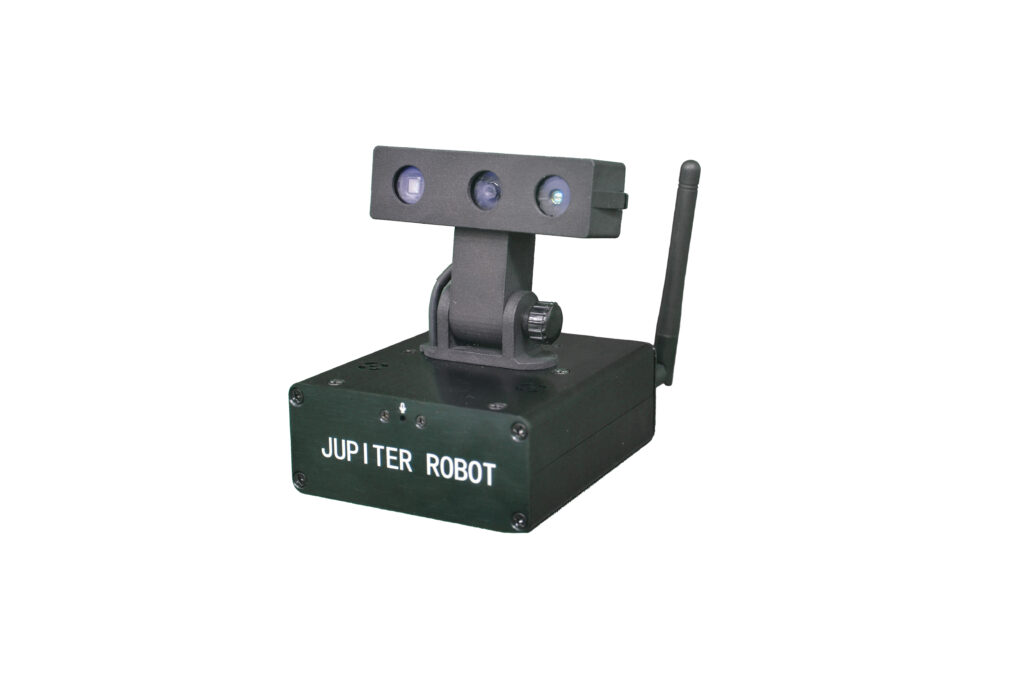At an international joint conference on artificial intelligence (IJCAI) 2023 I had the opportunity to talk to Jerry Tan from Lattel Robotics, a company aimed at supporting robotic education and training aimed at A. and development of service robots for students. Their aim is to equip students with practical AI application skills in computer vision, autonomous navigation, manipulation of objects and speech interactions.
Through their AI robotic workshops and AI applications, Lattel Robotics offers an introduction to the development of robotic operating system applications (ROS) in the robotic service. As a hardware partner for the Robocup@Home Education initiative, they help schools and institutions in the AI robotic challenge competition by dealing with this solution to the real world. Their solutions AI learning include the establishment of AI laboratories, design of the curriculum and the development of competitors.
Andrea: Thank you for taking the time to talk to me. It’s Pleoy that recognizes you. Could you please tell me more about who can benefit from the Jupiter2 platform and what exactly is designed?
Jerry: Almost anyone can use it with programming facilities to start developing its AI applications through the development of service robots using software.
Andrea: What sensors do your robots use? Just microphones and cameras, or is there more?
Jerry: Yes, so we used ranges, included RGB-D cameras and Lidar sensors for depth. In addition, we have microphones and speakers for speech interaction along with robotic weapons to handle objects and mobile platforms for navigation.
Andrea: So I have a little question about that. Do you have the API (application programming interface) with which students and scientists can go through?
Jerry: This is not always necessary because the robot is equipped with an OWL notebook and acts as a central processing unit. We start them easier because we have integrated an open-source software, such as OpenCV and Yolo, using ROBOTs (ROS1 and ROS2). These are popular tools between scientists and AI developers.
Andrea: It sounds interesting, but the setting process seems to be complicated. Integration often takes time.
Jerry: The robotic platform is already integrated and ready for deployment. For our educational equipment AI, Juno2, all you have to do is connect it to the notebook via the USB port and you can immediately introduce Linux (Ubuntu) with ROS without any software installation.
 Teaching facilities AI, Juno2.
Teaching facilities AI, Juno2.
Andrea: How do you work with schools?
Jerry: We are an education provider, support schools and institutions that want to present practical learning of AI in class. Programming experience in Python or C ++ is a prerequisite for developing AI applications. So we provide a Python Workshop Introduction for Complete Beginners. Then, using access trains, we offered three -day AI robotics workshops using Jupiter2 workshops or 2 -day AI applications using Juno2. Through these seminars, teachers receive an overview of AI applications that would allow them to adapt the material according to education, training or even research purposes.
Andrea: What if someone does not have direct access to the robot? Can they work for remotal?
Jerry: Absolutely. You can connect via the remote desktop software from the computer and continue programming. As mentioned right now, we also have a smaller device called Juno2, designed for use in the classroom. In this case, you do not need a complete robot setting; You can use this device to perform applications for computer vision and speech interaction. It is a plug-and-play solution that works with any laptop or operating system, automatically loads Ubuntu, ROS and our Jupiter software development framework. It is ideal for performing online classes, as studs can continue to learn from home or anywhere.
Andrea: If you have such a robot, can another component like speakers be added to your robots?
Jerry: Yes, certainly. That’s a good question. Jupiter2 is an open platform that is
Customizable and reconfigurable. If you have an engineering background, you can adjust the hardware based on the requirements. This flexibility allows beginners and advanced users to focus on their specific areas of interest, where it is software programming or adaptation of hardware.
Andrea: Have you exported these gadgets?
Jerry: Yes, before we exported to Europe, Africa, South and North America. So far there are more than 30 schools, universities and institutions around the world that have adopted our educational platforms for education, training, research and/or robotic competeter.
Andrea: Fantastic, thank you for your time and knowledge. I wish you would continue to success in the future!
For more information, see Robotics.

|
Jerry Tan is the CEO of Lattel Robotics. Jerry, who became a German engineer, is currently running robotic and educational companies AI in Malaysia and Singapore. Jerry tried to strengthen anyone who began to learn AI and worked closely with schools and academic institutions in establishing laboratories and the development of competitors. |

Andrea Rafai is Ph.D.

Andrea Rafai is Ph.D.

